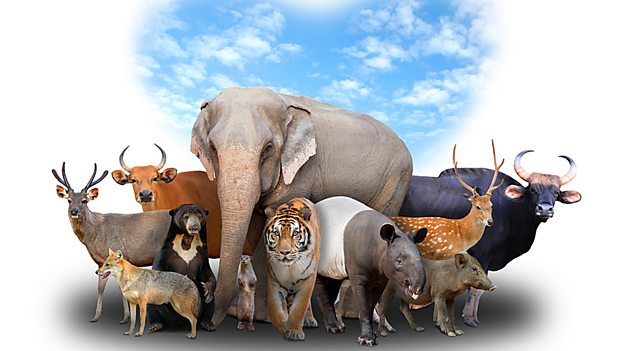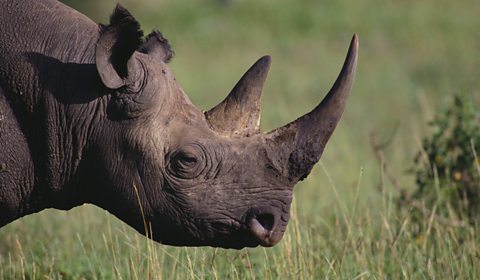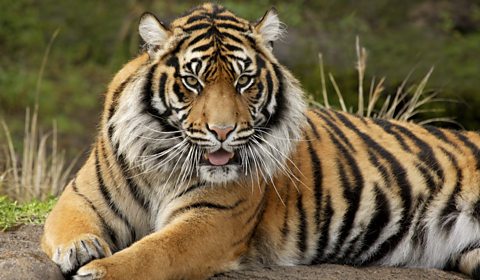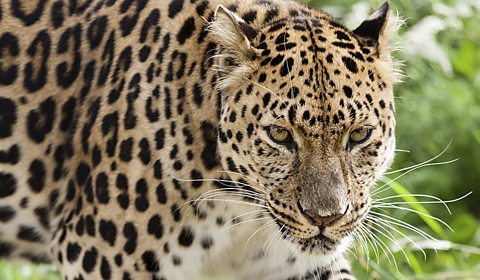Unit 17: Endangered animals
Talking about the future
Select a unit
- 1 Pop-ups
- 2 Hidden talents
- 3 Can't buy me love
- 4 Travellers' tales
- 5 The colleague from hell
- 6 Jurassic mystery: unpacking the past
- 7 Career changes
- 8 Art
- 9 Project management
- 10 The dog ate my homework!
- 11 The diary of a double agent
- 12 Fashion forward
- 13 Flat pack skyscrapers
- 14 Extreme sports
- 15 Food fads
- 16 Me, my selfie and I
- 17 Endangered animals
- 18 A nip and a tuck: cosmetic surgery
- 19 I'm really sorry...
- 20 Telling stories
- 21 Fakes and phrasals
- 22 Looking to the future
- 23 Becoming familiar with things
- 24 From rags to riches
- 25 Against the odds
- 26 Our future on Mars?
- 27 Where is it illegal to get a fish drunk?
- 28 Dodgy dating
- 29 Annoying advice
- 30 I'll have been studying English for thirty weeks
Session 3
There are millions of species of animals in the world. Unfortunately many of them are under threat of extinction. Do you know what they look like? Try our picture quiz and a reading activity to learn about some of the most endangered creatures on earth.
Activity 2
5 of the world's most endangered animals
What's the future for these animals?
At least fifty animals move closer to extinction every year. That's according to the International Union for Conservation of Nature (IUCN). Some of them have had their numbers drastically reduced because of poaching and the destruction of their natural habitat by humans or as a result of climate change.
Here's some information about 5 of the species listed by the World Wildlife Fund (WWF) as critically endangered because they are facing an extremely high risk of extinction in the wild.
To do
Read this article carefully. There is a picture quiz at the end to test what you've understood.
Read the text and complete the activity

5 of the world's most endangered animals
Black rhino (Diceros bicornis)
Rhinos are one of the oldest groups of mammals. Some say they are virtually living fossils. But they will end up as fossils if poaching is not stopped. Poaching on a large scale between 1970 and 1992 wiped out ninety-six percent of black rhinos. They live in Namibia and east coast of Africa and are targeted particularly for their horns. It’s believed that there are fewer than 5,000 surviving.
Hawksbill turtle (Eretmochelys imbricate)
These reptiles have lived for more than a hundred million years, but some species are not going to be with us for much longer if the rate of decline is not stopped. Hawksbill turtles live in tropical oceans and play an important role in maintaining coral reefs. They feed on sponges and create better access for fish to find their own food on the reef’s surface. But the species is under threat, not only from the pollution which is damaging their habitat, but also from fishing practises and the illegal trade in their shells. They go to the surface to breathe, and if caught up in nets and hooks, they drown. Conservationists aim to work with fishermen to prevent turtles being caught in nets.
Sumatran tiger (Panthera tigris sumatrae)
Fewer than four hundred Sumatran tigers survive in the remaining areas of forests of their native island. Rapid deforestation and poaching mean this species could end up extinct like its Javan and Balinese relatives. Indonesian law protects them by imposing jail sentences and fines for poachers. But there’s still a big market in Asia for tiger products.
Western lowland gorilla (Gorilla gorilla gorilla)
These gorillas can be found in the Congo Basin and Central Africa. Poaching and the deadly virus Ebola, also found in the region, have caused a decline by more than sixty percent in the number of western lowland gorillas over the last twenty to twenty-five years. It’s worth noting that the handling of bushmeat by hunters might have helped the spread of Ebola to humans. Scientists believe that even if the threat to the species is removed it will take about seventy-five years for its population to recover.
Amur leopard (Panthera pardus orientalis)
The Amur leopard can be found in the far east of Russia. Its beautiful fur attracts poachers. But conservationists see the light at the end of the tunnel for this animal as their population has more than doubled in just seven years. Recent reports put the number of these big cats at fifty-seven in Russia’s Land of the Leopard National Park. There are also 8 to 12 individuals in neighbouring Chinese areas.
To do
Try this quiz to check how much of the text you can understand.
Endangered animals quiz
5 Questions
Answer the questions by chosing the correct pictures
Help
Activity
Answer the questions by chosing the correct pictures
Hint
What is a mammal?Question 1 of 5


Help
Activity
Answer the questions by chosing the correct pictures
Hint
What does 'poaching' mean?Question 2 of 5


Help
Activity
Answer the questions by chosing the correct pictures
Hint
Read the paragraphs about the Sumatran tiger, the western lowland gorilla and the hawksbill turtle closely.Question 3 of 5



Help
Activity
Answer the questions by chosing the correct pictures
Hint
Is that light I can see in the distance?Question 4 of 5


Help
Activity
Answer the questions by chosing the correct pictures
Hint
Remember where each animal lives. Is it a region where there is something deadly?Question 5 of 5


Excellent! Great job! Bad luck! You scored:
End of Session 3
We hope you learnt a lot from this session. Animals are at risk but thanks to the hard work of some conservationists their extinction could be delayed. Rob has an interview with a man who wants to save these creatures in Session 4. Join us!
Session Vocabulary
drastically
something which happens suddenly and with a very obvious effectpoaching
capturing and killing animals illegallynatural habitat
region in which animals or plants normally livecritically endangered
facing an extremely high risk of extinction without human helpin the wild
in nature, without people’s interferencemammals
animals which are fed milk produced by their mother and are not born from an eggfossils
animal or plant remains preserved in rock for a very long timewiped out
disappeared completelyhorns
hard, pointed part which grows on top of an animal’s headreptiles
animals that lay eggs and use the sun to keep their bodies warmcoral reefs
underwater areas made of a rock-like substance created by small sea animalsdeforestation
the destruction of forests by cutting down treeslight at the end of the tunnel
hope